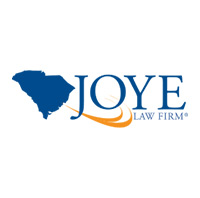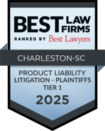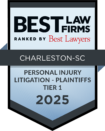What is the Best Time of Day to Boat in Order to Stay Clear of Boating Traffic & What Can You Do to Avoid Possible Accidents?
Recreational boating is a popular activity in South Carolina. But it can also be deadly. South Carolina reported the fourth-highest number of boating deaths according to one survey published by the United States Coast Guard. Overall, South Carolina ranked seventh in the country for the total number of boating accidents. This is why anytime you take a sailboat, motorboat, or any other type of recreational watercraft out, you need to be aware of proper safety protocols.
Avoiding Boating Traffic
When you are out on the water, keep in mind that you are not alone. South Carolina waterways are not just for recreational use. They also serve as vital commercial shipping lanes. And in broad daylight, when commercial traffic may be at its peak, a 1,000-foot tanker is unlikely to spot a small sailboat. The onus is therefore on the smaller boat operator to keep a constant watch on the boating traffic.
The Coast Guard advises all boaters to “clear the area” if they see a ship approaching from several miles away. Large commercial vessels cannot maneuver as easily as recreational boats, which means they cannot turn at the last moment to avoid a boating accident. The Coast Guard also notes that even experienced tanker captains can “lose sight” of a smaller boat as close as 1,500 feet away. Consequently, the larger ships will simply keep going in a straight line. Ultimately, “a 1,000-foot container ship could run over a 50-footer and not feel a thing.”
General Rules to Avoid Accidents
Before taking out any commercial watercraft you should be aware of South Carolina’s boating regulations. Under South Carolina law, all boat operators are “responsible for taking action to avoid collisions.” All boat operators must keep three rules in mind:
- Practice good seamanship;
- Keep a sharp lookout; and
- Maintain a safe speed and distance from all other boats.
When Does a Boat Have “Right of Way”?
While in general no boat or vessel has “right of way” over another, there are critical exceptions that may apply depending on the situation. A power-driven vessel, such as a motorboat, must “give way” to sailboats under sail (unless it is overtaking you), commercial fishing boats, and any boat that is in apparent distress or has limited maneuverability. Similar rules apply to sailboats.
In practice, this means that if a powerboat and a sailboat are about to meet head-on in the open waters, the powerboat must give way and move to the starboard (right) to allow the sailboat to continue in a straight path. But if one powerboat encounters another, neither has the right-of-way and both vessels should keep to starboard.
In a crossing situation involving two powerboats, the right-of-way is based on the orientation of the operators. The operator to the starboard side of the other has the right-of-way. This means that the operator on the port (left) side must give way by moving his or her vessel starboard. With respect to a powerboat meeting a sailboat, the same rules apply as with head-on encounters: the sailboat has right-of-way, and the powerboat must move to give way.
The one time that a sailboat must give way to a powerboat is when the former is overtaking the latter. The boat in the “overtaking” position must always give-way. The boat being overtaken, accordingly, must continue sailing in a straight path.
Boating at Night or With Limited Visibility
Boating is always safest during the day when the weather is clear and you have maximum visibility. But if you are navigating during sunrise, sunset, or at night—or during any period where visibility is lower than normal—you must display your boat’s navigation lights. All boats should have at least two types of navigation lights: Red and green lights along the side of the boat to indicate the port and starboard side, respectively; and a white sternlight that can be seen from behind. Powerboats must also have a white masthead light that shines forward and to the sides. Sailboats do not have this light. Smaller powerboats—specifically those under 39.4 feet in length—may display a single all-direction white light in place of the separate masthead and sternlights.
These navigation lights are essential in determining right-of-way during nighttime or limited-visibility boating. For example, if you are in your powerboat and see a single white light in front of you, that indicates you are approaching and overtaking another vessel from behind and you should go around to the either side. But if you see a white light and a green light—the other vessel’s starboard-side running light—then you have the right-of-way, although you should still exercise caution in case the other boat does not see you. And if you see either a red or green light without an accompanying white light, that is a strong indication that you are approaching a sailboat, which always has the right-of-way.
Filing a “Float Plan”
It is also a good idea to file a “float plan” before taking your boat out onto South Carolina waters. A float plan generally contains a description of your boat, your anticipated route and departure time, and any emergency contact information. You should give this float plan to your local marina or a friend. In the event of a serious boating accident that leaves your vessel disabled, this float plan can help the Coast Guard and South Carolina authorities locate you and your boat.
Need Help from a Myrtle Beach Boating Accident Attorney?
This is only a brief overview of South Carolina’s boating safety rules. If you have been in a boating accident it is important to seek advice from a qualified South Carolina boating accident attorney who understands the law in this area and can help you hold any negligent parties responsible. If you are in the Charleston, Columbia, Clinton, or Myrtle Beach areas and need immediate legal assistance, contact the Joye Law Firm Injury Lawyers right away.

































